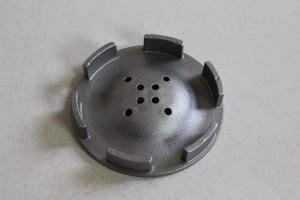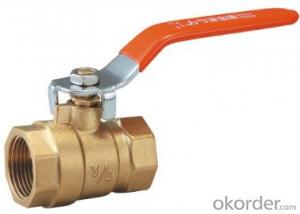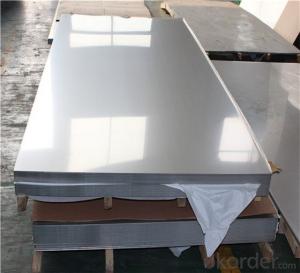Stainless Steel 440
Stainless Steel 440 Related Searches
Best Paint For Stainless Steel Blanket Insulation For Steel Buildings Primer For Galvanized Steel Foam Filter For Stainless Steel H S Code For Stainless Steel Surface Grinding Wheels For Stainless Steel Surface Grinding Wheels For Hardened Steel Hole Saw For Stainless Steel Paint For Stainless Steel Stainless Steel For BbqHot Searches
Steel Mesh Panels For Sale Price For Stainless Steel Scrap Scrap Price For Stainless Steel Price For Stainless Steel Stainless Steel Tank For Sale Stainless Steel Sheets For Sale Cheap High Tea Sets For Sale Stainless Steel Tanks For Sale Stainless Steel For Sale High Density Fiberboard For Sale Solar Hot Water Collectors For Sale Scaffolding For Sale In Uae Scaffolding For Sale In Ireland Scaffolding For Sale In Houston Type Of Inverter For Solar Price Of Shipping Containers For Sale Types Of Inverter For Solar Stock Price For Aluminum Used Solar Inverter For Sale Steel Mesh Panels For SaleStainless Steel 440 Supplier & Manufacturer from China
Okorder.com is a professional Stainless Steel 440 supplier & manufacturer, offers integrated one-stop services including real-time quoting and online cargo tracking. We are funded by CNBM Group, a Fortune 500 enterprise and the largest Stainless Steel 440 firm in China.Hot Products
FAQ
- The fatigue strength of stainless steel sheets can vary depending on various factors such as the specific grade of stainless steel, the manufacturing process, the surface finish, and the testing conditions. Generally, stainless steel sheets exhibit high fatigue strength due to their inherent properties, such as the ability to withstand cyclic loading and resistance to corrosion. The fatigue strength of stainless steel sheets is typically expressed in terms of stress amplitude (σa) or stress range (σr) that the material can withstand for a specific number of cycles before failure. It is often determined through fatigue testing, which involves subjecting the material to repeated cyclic loading until failure occurs. The number of cycles required to cause failure is known as the fatigue life. Different grades of stainless steel have different fatigue strengths, with higher grades typically exhibiting higher fatigue resistance. For instance, austenitic stainless steels such as 304 and 316 have excellent fatigue strength and are commonly used in applications where cyclic loading is prevalent, such as structural components and automotive parts. The fatigue strength of stainless steel sheets can also be influenced by surface finish. Poor surface conditions, such as scratches, notches, or roughness, can act as stress concentrators and reduce the fatigue strength. Therefore, it is important to ensure that stainless steel sheets have a smooth and defect-free surface to maximize their fatigue resistance. Moreover, the fatigue strength of stainless steel sheets can be affected by environmental factors such as temperature, humidity, and corrosive media. Elevated temperatures and aggressive environments can reduce the fatigue life of stainless steel, so it is crucial to consider these factors when designing for fatigue resistance. In conclusion, the fatigue strength of stainless steel sheets is generally high due to their inherent properties. However, it can vary depending on factors such as grade, surface finish, and environmental conditions. Conducting fatigue testing and considering these factors during the design process can help ensure the optimal performance and durability of stainless steel sheets in cyclic loading applications.
- Indeed, fire escapes can utilize stainless steel sheets. Stainless steel, known for its remarkable durability and resistance, exhibits the ability to endure elevated temperatures and retain its structural integrity when confronted with fire. This material, free from combustible properties, abstains from emitting hazardous gases when subjected to heat, thereby establishing itself as a secure option for constructing fire escapes. Moreover, the corrosion resistance inherent in stainless steel guarantees the longevity and dependability of the fire escape system. Ultimately, stainless steel sheets emerge as an exceptional selection for fire escapes due to their robustness, fire resistance, and durability.
- Indeed, electromagnetic shielding can indeed be achieved through the utilization of stainless steel sheets. The remarkable conductivity of stainless steel allows it to proficiently obstruct or weaken electromagnetic radiation. By employing stainless steel sheets as a protective barrier, the infiltration of electromagnetic fields can be effectively hindered, consequently safeguarding vulnerable electronic devices, machinery, or areas from any potential electromagnetic interference (EMI) or radio frequency interference (RFI). The utilization of stainless steel sheets is prevalent in scenarios necessitating electromagnetic shielding, such as the fabrication of enclosures or cabinets utilized in the realms of electronics, medical equipment, telecommunications, or military systems.
- To remove heat discoloration from stainless steel sheets, there are a few different methods you can try. One common method is to use a stainless steel cleaner or polish specifically designed to remove heat discoloration. These products often contain mild abrasives that can help to remove the discolored layer. Follow the instructions on the product and apply it to the affected area using a soft cloth or sponge. Rub gently in a circular motion, then rinse with water and dry thoroughly. Another method involves using a mixture of baking soda and water. Create a paste by mixing equal parts baking soda and water. Apply the paste to the discolored area and gently rub it in using a soft cloth. Rinse with water and dry thoroughly. If the discoloration is stubborn and the above methods haven't worked, you can try using a stainless steel scratch eraser or a fine-grit sandpaper. Be cautious when using these methods as they can potentially scratch the stainless steel surface. Always test in a small inconspicuous area first and proceed with caution. It's important to note that prevention is key in avoiding heat discoloration on stainless steel sheets. Using heat-resistant pads or trivets under hot pots and pans can help prevent heat transfer to the stainless steel surface. Additionally, avoiding direct contact with high heat sources, such as placing stainless steel sheets too close to stovetops or ovens, can also prevent discoloration.
- Yes, stainless steel sheets can be used in the aerospace industry. Stainless steel possesses excellent strength, corrosion resistance, and high-temperature stability, making it suitable for various aerospace applications such as aircraft frames, engine components, and structural parts.
- Stainless steel sheets are indeed suitable for hygienic applications. The reason lies in its remarkable hygiene properties attributed to the non-porous surface, which effectively resists bacteria, mold, and other microorganisms. Moreover, stainless steel is effortless to clean and maintain, making it perfect for sectors that prioritize cleanliness and hygiene, including the food and beverage industry, healthcare facilities, and pharmaceutical manufacturing. Furthermore, stainless steel exhibits exceptional durability, corrosion resistance, and high-temperature tolerance, rendering it a superb choice for hygienic applications.















































